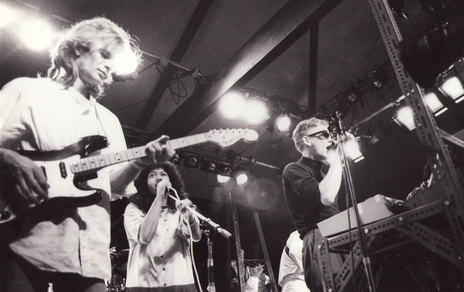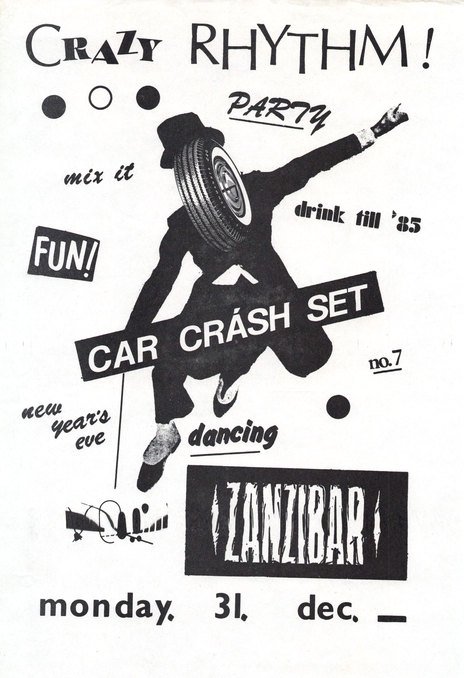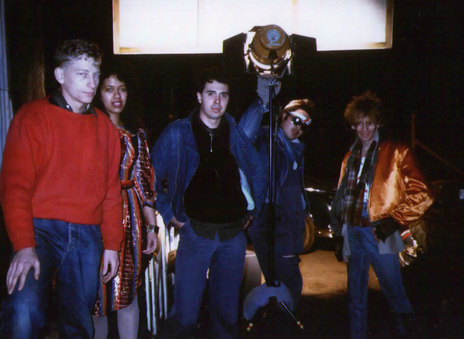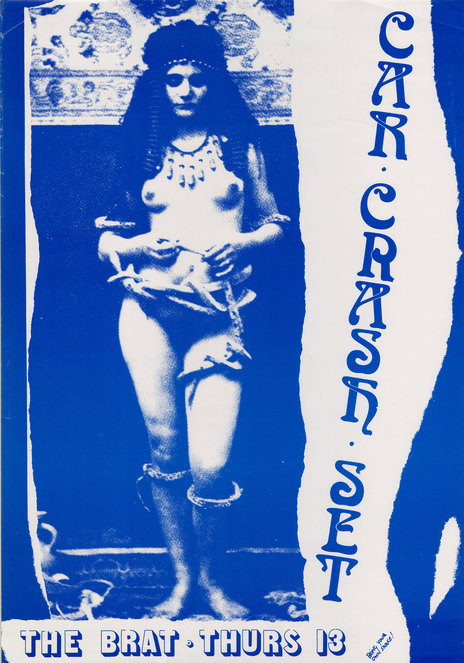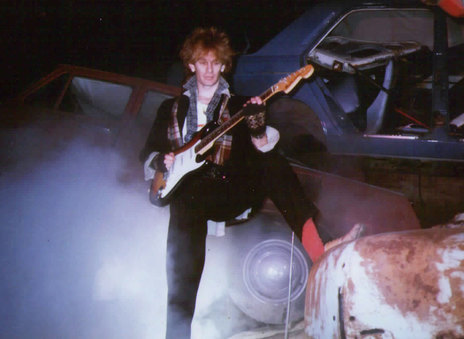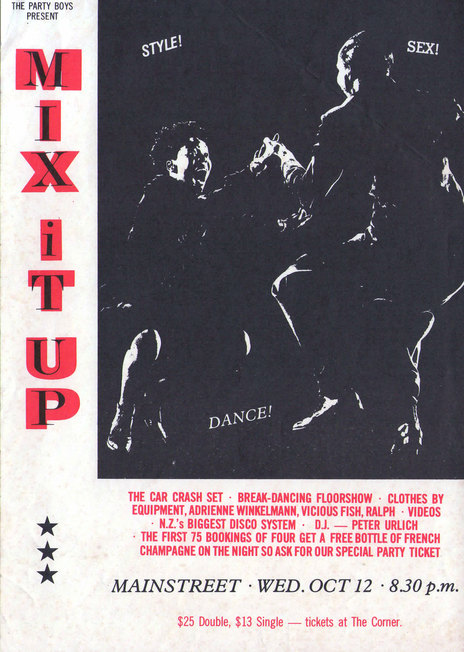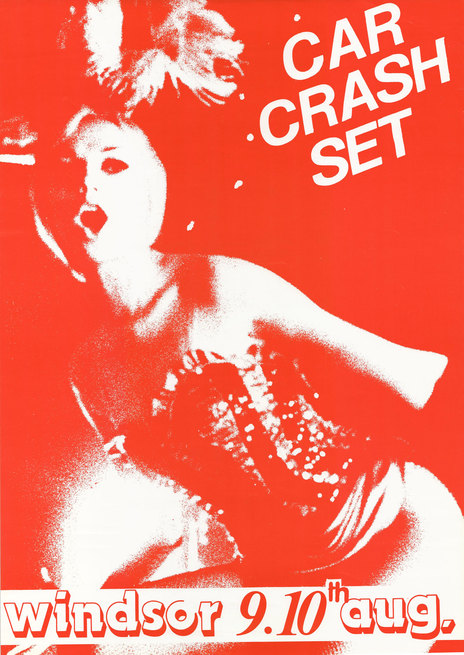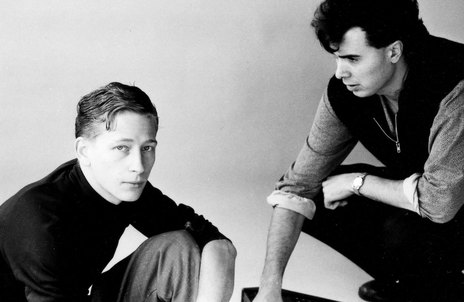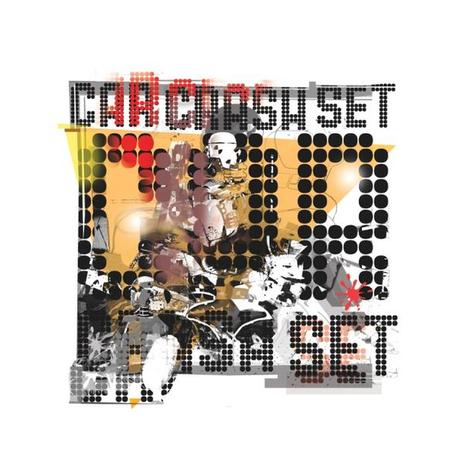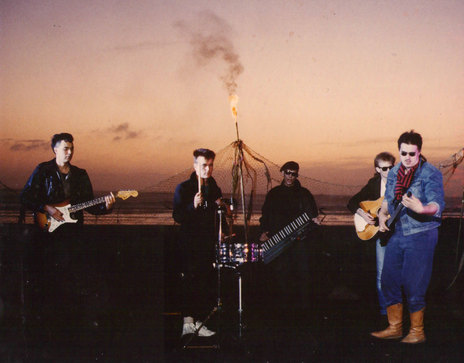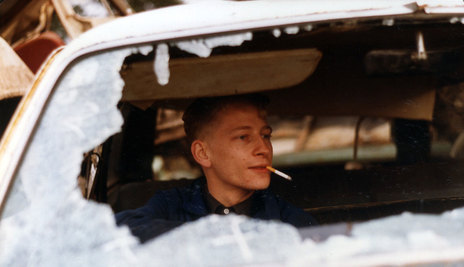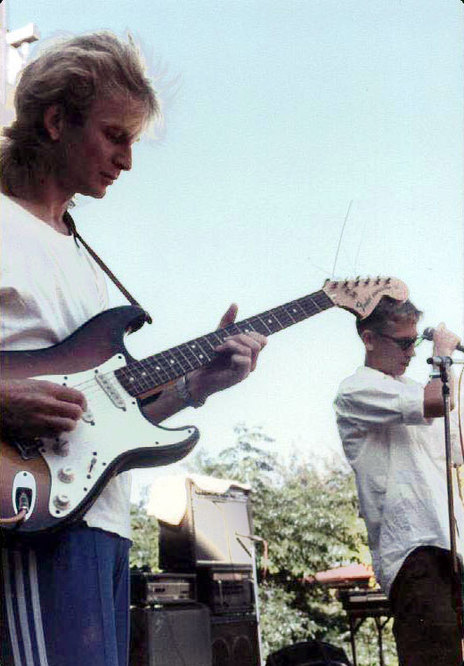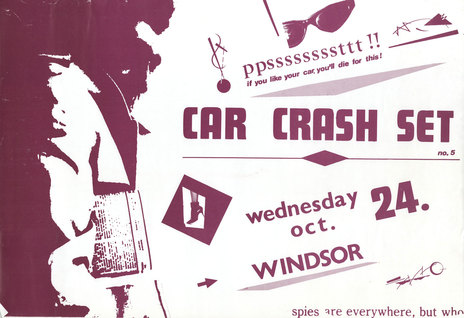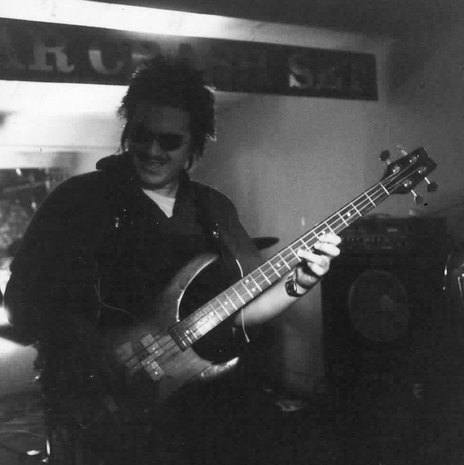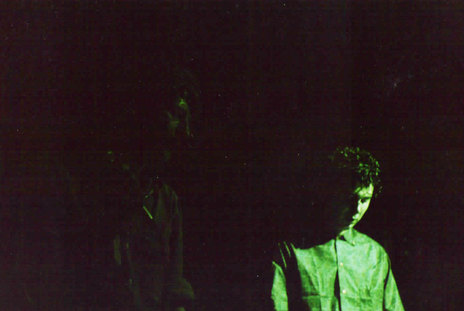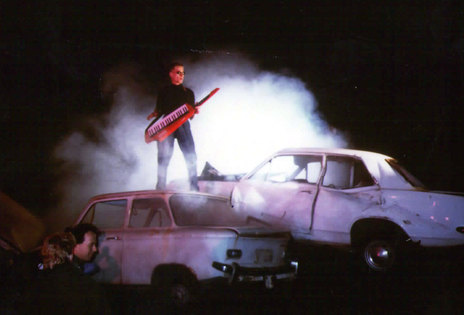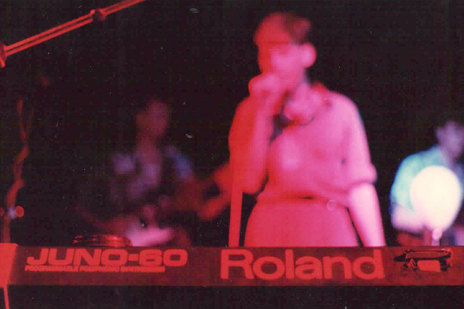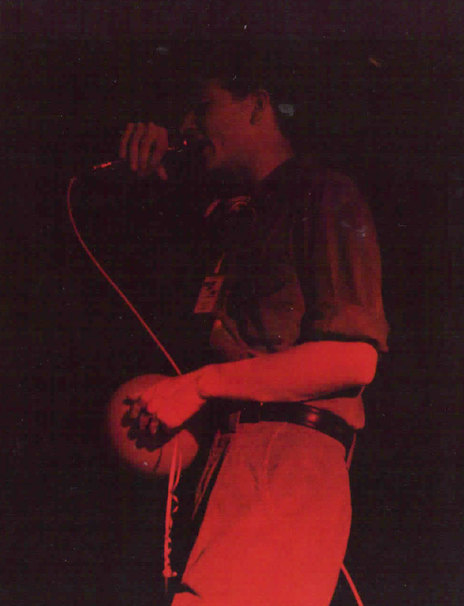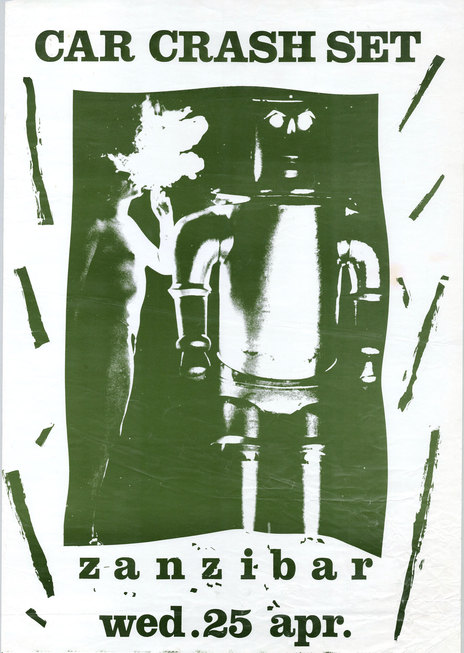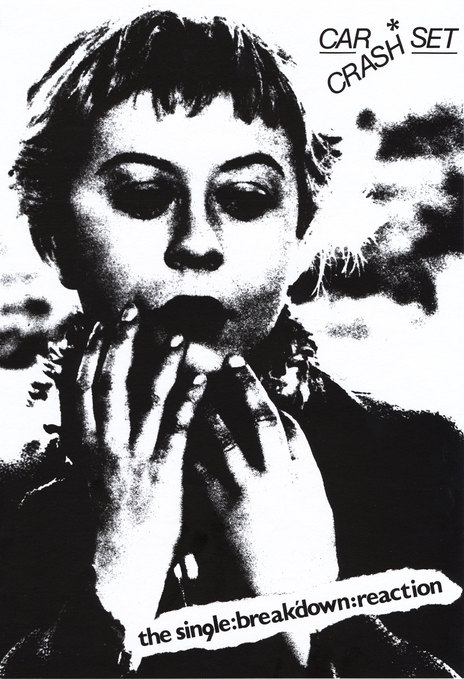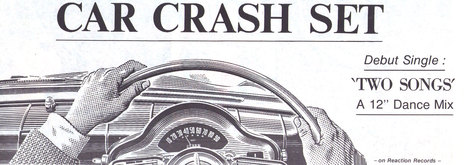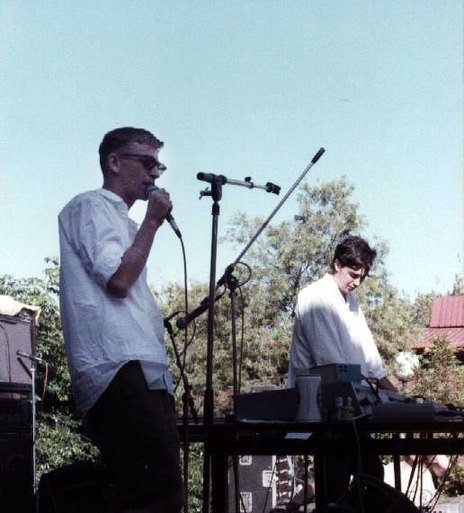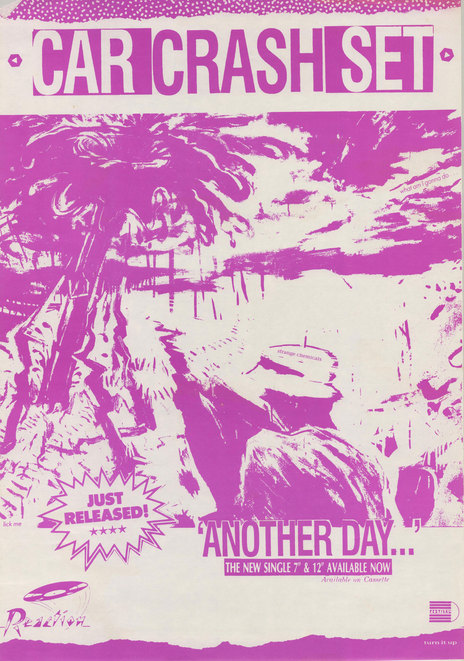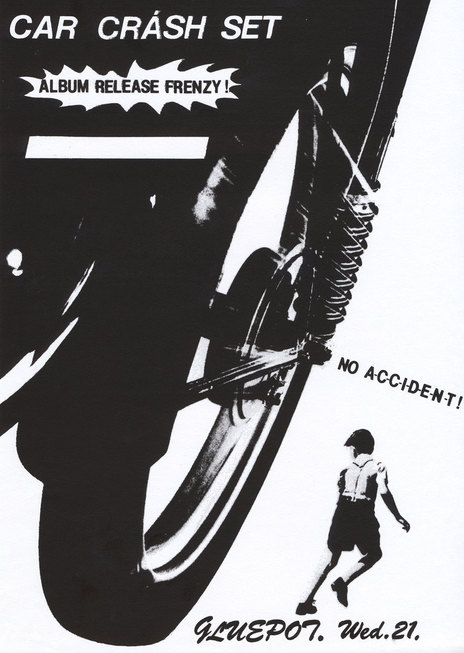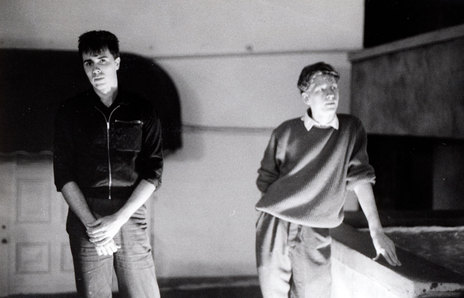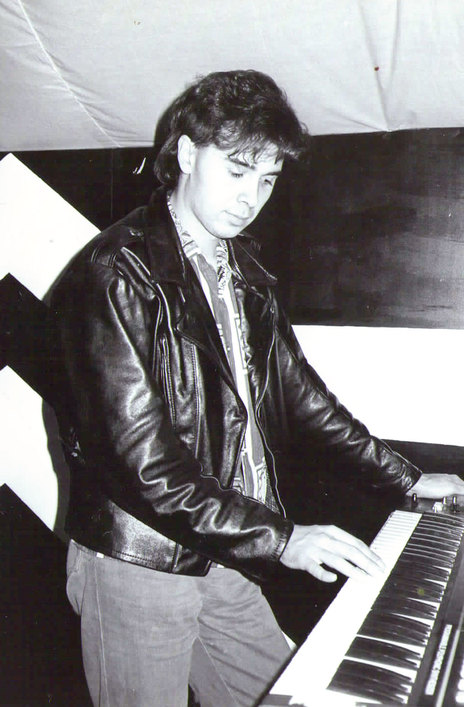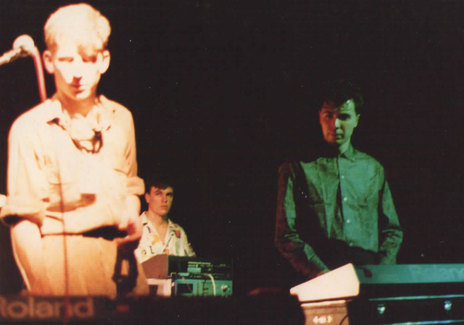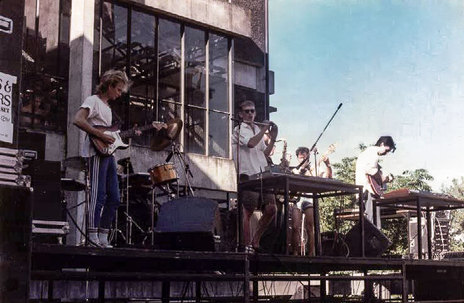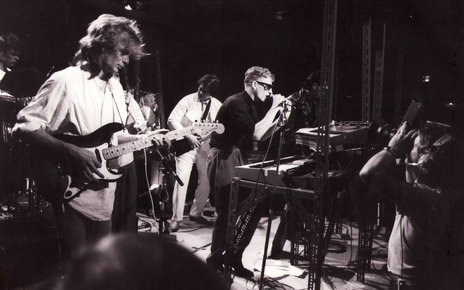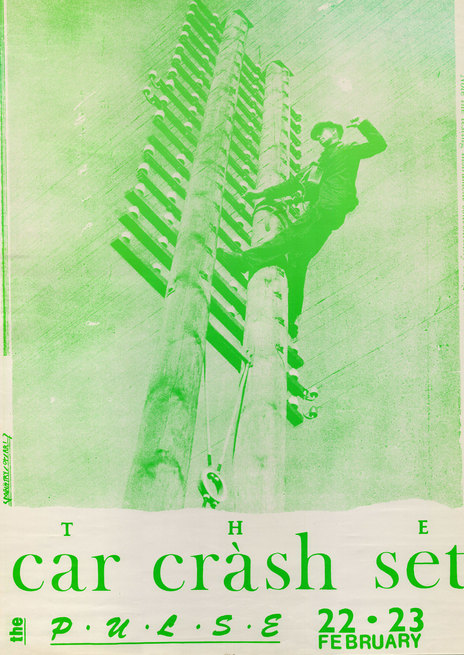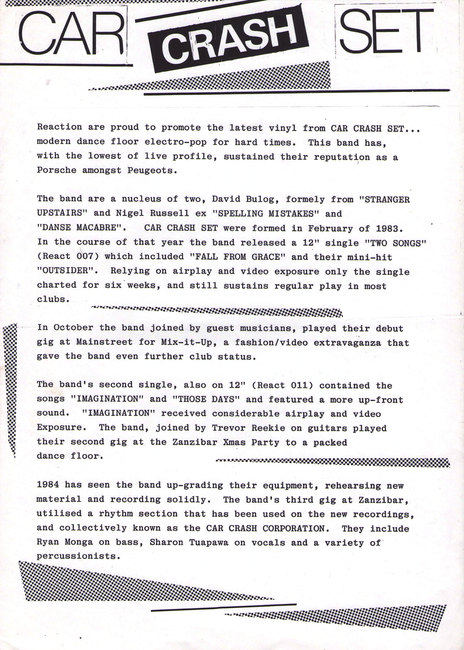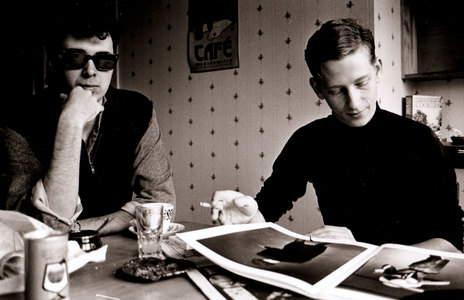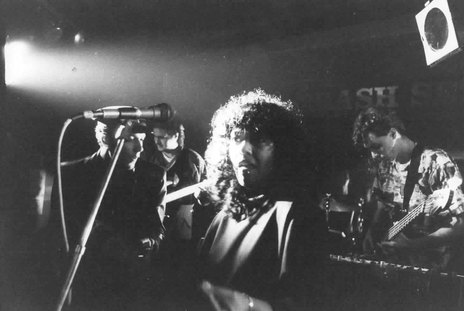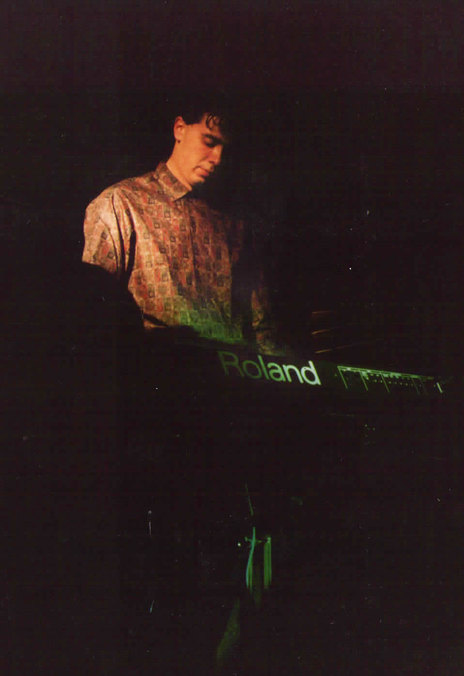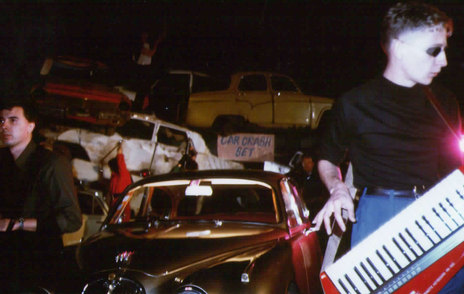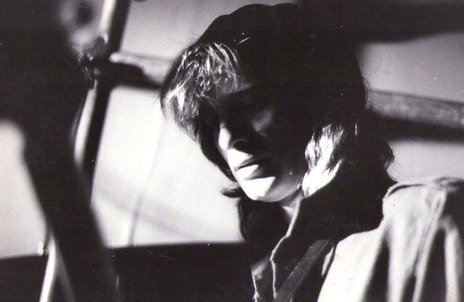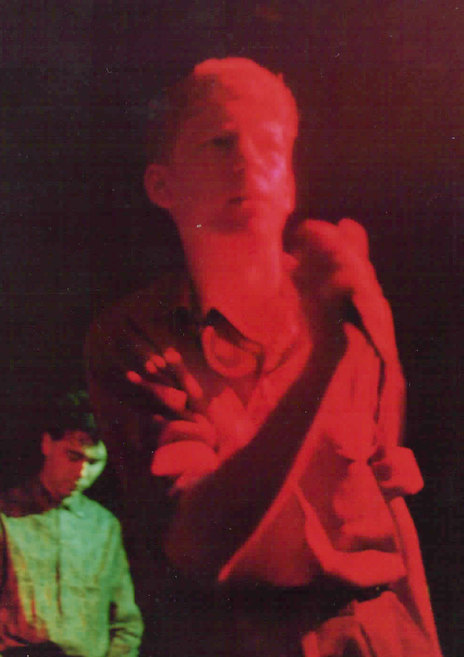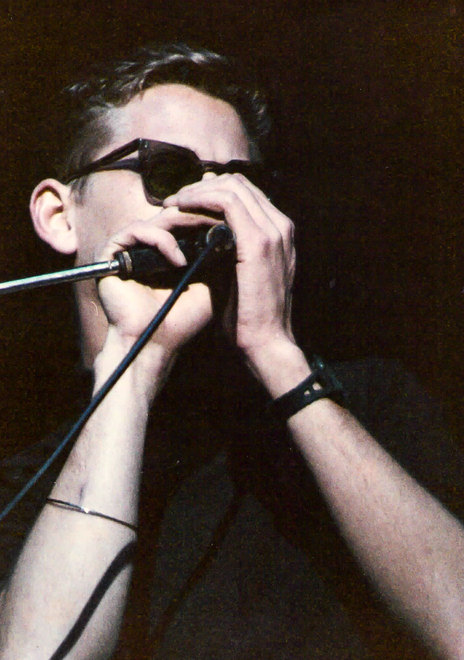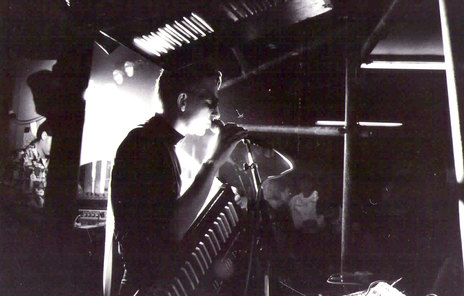Which is strange because Car Crash Set’s 1983 debut 12-inch single ‘Two Songs’, housing ‘Outsider’ and ‘Fall From Grace’ on the flip, is one of the finest EPs ever released in this country. From the moment the insistent drum machine rhythm of ‘Outsider’ hits the speakers, it’s obvious we’re listening to something special. The sequencer then provides a powerful, infectious melody that pulses and clicks like Kraftwerk on krack, before singer Nigel Russell finally implores, “Well I’m feeling so nervous and I don’t want to show, just how much I really need you so don’t let me go.”
‘Fall From Grace’ then completes a perfect coup d’etat by trumping ‘Outsider’ as a vibrant, elegantly lush eight minutes of pure aural delight. Founded on a swirling sequencer pattern and gently thudding bassline, it’s a beautiful piece of music, complemented by Russell’s baritone vocals with the thin white dude lazily intoning, “Is this the last time I’ll ever see those eyes?” More new wave than new romantic, both songs reveal a fondness for the drama of love, with Russell’s mournful lyrics and voice evoking Joy Division’s Ian Curtis and New Order’s Bernard Sumner.
But we’re getting a little ahead of ourselves, jumping into the fast lane before we’ve gone through the band’s early steps. They formed as an Auckland-based duo in October 1982, with Post Office technician and Stranger Upstairs band member David Bulog joining former Danse Macabre vocalist (also ex-Spelling Mistakes bassist) Nigel Russell on synthesizers and guitar. The band arrived when the local music scene was in the thrall of post-punk British music like Psychedelic Furs, Siouxsie & the Banshees, The Cure, and the aforementioned two Factory Records bands, Joy Division and New Order.
Another musician, Nicholas Jenkins, did play on Car Crash Set’s first release, a demo version of ‘Toys’ featured on the Propeller Records compilation We'll Do Our Best in early 1983. It was one of three tracks demoed at Progressive Studios (the others were ‘Heart of Stone’ and ‘Another Day’, both included on German label Anna Logue’s compilation Join The Car Crash Set), though Jenkins left for London before the recording of the ‘Two Songs’ 12-inch began.
Reminiscent of a darker Depeche Mode or Mute Records founder Daniel Miller’s band The Normal’s J.G. Ballard-inspired single ‘Warm Leatherette’ (later covered to great acclaim by Grace Jones), ‘Toys’ is an embryonic, mildly successful attempt to craft emotion from synthetic elements. Like the German compilation, the band’s name is actually taken from the last line of Miller’s lyrics for ‘Warm Leatherette’: “Join the car crash set.” Many subsequently did, with the band’s line-up swelling to at least seven members later in the decade.
‘Imagination’ remains a tricky proposition to track down, making the 12-inch single highly sought after.
Following the release of the ‘Two Songs’ 12-inch, which also featured Trevor Reekie on synths and guitar and resulted in a TVNZ video for ‘Outsider’, Car Crash Set soon unveiled their second 12-inch single, the much-loved ‘Imagination’ backed with ‘Those Days’. Jaunty and nicely sung by Russell, with a subtle The The inflexion to the beats and rhythm, ‘Those Days’ swells to a catchy, breathy chorus, featuring the backing vocals of Sharon Tuapawa. The song was included on the band’s debut album No Accident, while ‘Imagination’ remains a tricky proposition to track down, making the 12-inch single highly sought after. Like any Car Crash Set vinyl, prices easily edge into triple figures for mint copies.
Underwhelmed by the idea of playing live, Car Crash Set took to the stage just five times in 1984, with their live debut only occurring at the end of 1983 at Mix It Up, a fashion and video event at Queen Street’s Mainstreet Cabaret.
Car Crash Set shows were a mixed bag. Highly anticipated because of their rarity, they often featured a light show by Harry Ratbag (aka Russell’s brother Harry the Bastard), live drummer, backing tapes, slides and white boys swaying to the beat on stage, with Reekie’s blonde Kajagoogoo hairdo and Russell’s office worker clothes giving them a peculiarly English look.
Things could be a little sterile, depending on the crowd or the reliability of the equipment, but the band certainly offered locals a unique live experience, only bested by touring international synth bands like Orchestral Manoeuvres In The Dark (supported by Car Crash Set at Logan Campbell Centre in 1985) and New Order’s shows at Mainstreet in 1982, Logan Campbell Centre in 1985 (with Car Crash Set performing at the Quays nightclub afterparty) and the Galaxy (now the Powerstation) in 1987.
“We’re not putting on airs and graces when we get on stage,” declared Russell at the time. “I think we’ll probably loosen up on stage the more [shows] we do.” A worthy document of the band’s live show was filmed at Quays for broadcast on music TV stalwart Radio With Pictures, presented by Karyn Hay, with Marginal Era also in on the act.
No Accident was a mild triumph for Car Crash Set. Lushly housed in a piece of whimsical modern art by Roger Guise, its eight songs represent 80s electronica filtered through the discerning eyes and ears of three funky white guys and bass player Ryan Monga, from South Auckland R&B outfit Ardijah. Produced by Reekie and the “play it loud crew”, engineered by frequent collaborator Tim Field and recorded at Mandrill Studios, sessions involved numerous members of the “Car Crash Corporation” – a loose collective of musicians who worked regularly in the studio and on stage with Bulog, Russell, Reekie and Monga. Additionally, Pat Roxburgh (bass), Rick Robertson (sax) and Bruce Aitken (trumpet) often joined the band live.
Recording for No Accident exceeded 150 hours, with the longest session lasting 18 hours, living up to Russell’s declaration that “initially we were interested mainly in studio work.”
Included on the album was the subsequent single ‘Breakdown’, a combustive piece of dance music, driven by Monga’s bass, energetic beats and some very Art Of Noise use of vocal cut-ups in the chorus. The 7-inch only single release is backed by a minimix of ‘Outsider’, conveniently linking the band’s recent electro past with its progressively more funk-based future. To contradict this statement, album opener ‘Justice’ is for many a local replica of New Order’s watershed moment, ‘Blue Monday’, which was released as a 12-inch single in May 1983. The opening few beats from the drum machine could be mistaken for ‘Blue Monday’, and the bass is equally evocative, but the song quickly morphs into its own entity, taking on the character of ‘Outsider’ but with an even greater sense of immediacy.
Recording for No Accident exceeded 150 hours, with the longest session lasting 18 hours, living up to Russell’s declaration that “initially we were interested mainly in studio work.” Colin Hogg gave the album four out of five in the Auckland Star newspaper on November 22, 1984, while the band’s label, Reaction Records, boasted that No Accident was “modern dance floor electro-pop for hard times,” concluding its gushing endorsement by describing it as "a Porsche among Peugeots."
Either way, Bulog, Russell, Reekie and the team worked tirelessly on their music, which probably explains the small number of live shows. Another reviewer, Tony Green, was less readily convinced. “Nigel Russell has religiously followed prevailing musical trends, occasionally being successful but often losing all credibility in the process,” he opined. “His latest endeavour is an attempt at electrofunk which, surprisingly enough, is almost acceptable. No Accident is a well-produced album that makes up in energy what it lacks in originality.” Perhaps frustratingly for the band, a polarised response to everything they did, from songs and shows to videos and photoshoots, remained a hallmark of Car Crash Set, both the concept and the corporation.
But the story doesn’t quite end there. The “Kings of Kiwi-synth” all but disappeared from view for a couple of years following the release of No Accident. However, they weren’t entirely idle, playing rare gigs, including venturing south beyond the Bombay Hills to Wellington, and writing new material. The latter would see the light of day in 1987 as the Another Day EP, featuring four songs mixed by English producer John Fryer in London. A veritable New Zealand/British production, the tracks also featured local guest appearances by the likes of Shona Laing and Dave McArtney. To secure the services of Fryer, who had worded with indie stalwarts Cocteau Twins, Fad Gadget and Depeche Mode, Bulog simply phoned and asked him if he would like to work on the tracks, eventually spending a week in London’s Blackwing Studios remixing and overdubbing the EP with him.
“If you take the Car Crash Set songs,” Fryer reasoned at the time, “some of them are full of gimmicks. They can be called gimmicks or they can be called songs.” The members of the band were duly impressed with Fryer’s handiwork. “All the tunes are the same, but he rearranged the parts, so they were quite different to the way we saw it,” Russell told journalist Chris Bourke. “We’ve learned a lot. His work on Another Day has affected the way we listen to things.”
The Another Day EP contained the title track plus ‘East And West’, ‘Talk To Me’ and ‘The More You Win’. Although the band had expressed a desire to return to a more keyboard-based sound, the track ‘Another Day’ is a warm, guitar-laden ballad featuring a crashing live drum intro with a haunting melody coursing through its sentimental veins. Described by one reviewer as “rich, catchy, melancholic,” the Timaru Herald called it “a nice drifting ballad that has much to offer in the way of accessibility and singalong bits.” Moving right along, Auckland student radio station bFM wrote of ‘East And West’, “brittle guitars lodge themselves in a mess of well-calculated tones and melodies,” while one wag described the entire EP as “Frankie Goes To Hollywood, with a slice of New Order for confusion.” Meanwhile, in a spot of 80s retrorama, the NZ Herald eloquently declared, “Wind up the ultra mixes here and you have a record the Chase Corporation could use for a swift demolition of the rest of downtown Auckland”, suggesting that if local synth music couldn’t move mountains at least it could topple towers.
Even though another reviewer at the time described the final release of new material by Car Crash Set as “the same old unfelt angst and impotent sexuality”, the band’s records and gigs throughout the era left an indelible impression in the hearts and minds of a discerning collective of local music fans who embraced what they were doing. While the mainstream thinks of Mi-Sex or Coconut Rough as New Zealand synth bands from the era, it was thanks to the pioneering spirit of Car Crash Set – and to an equal extent Wellington’s post-Steroids duo The Body Electric – that there was any interesting electronic pop music being made in the country at the time. Note that Nigel Russell was in an early version of Coconut Rough “for about three weeks until we started recording ‘Fall From Grace’ and then I saw the light!”
Anna Logue’s 2008 compilation, featuring key tracks ‘Outsider’ and ‘Fall From Grace’, rarities ‘Hit and Run’ and ‘Dreams’, the album version of ‘Heart of Stone’, plus the trio of early demos, is a testament to the continuing, even growing, interest in the little electronic band that could. It was released on vinyl initially and then expanded in 2016 for CD. Clearly, it’s never too late to join the Car Crash Set.
Car Crash Set reformed in the second decade of the 21st Century as Si Si Es, recording and releasing new music both digitally and on vinyl with one EP (the Spaced EP) in August 2019 and a sequel (Dos) in August 2020.
–
David Bulog passed away in Auckland on 13 October 2021.
